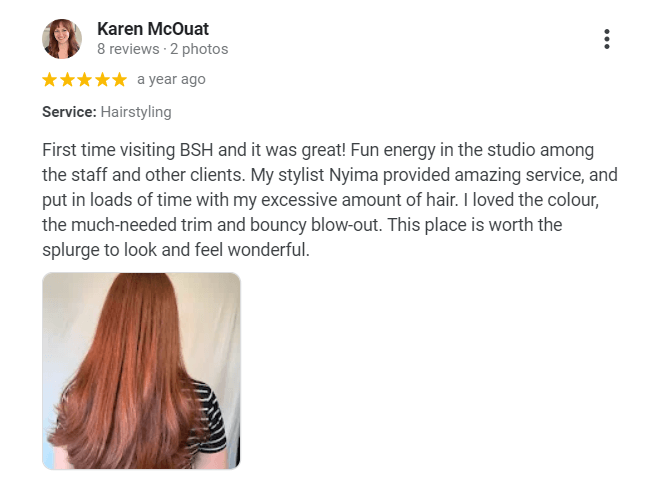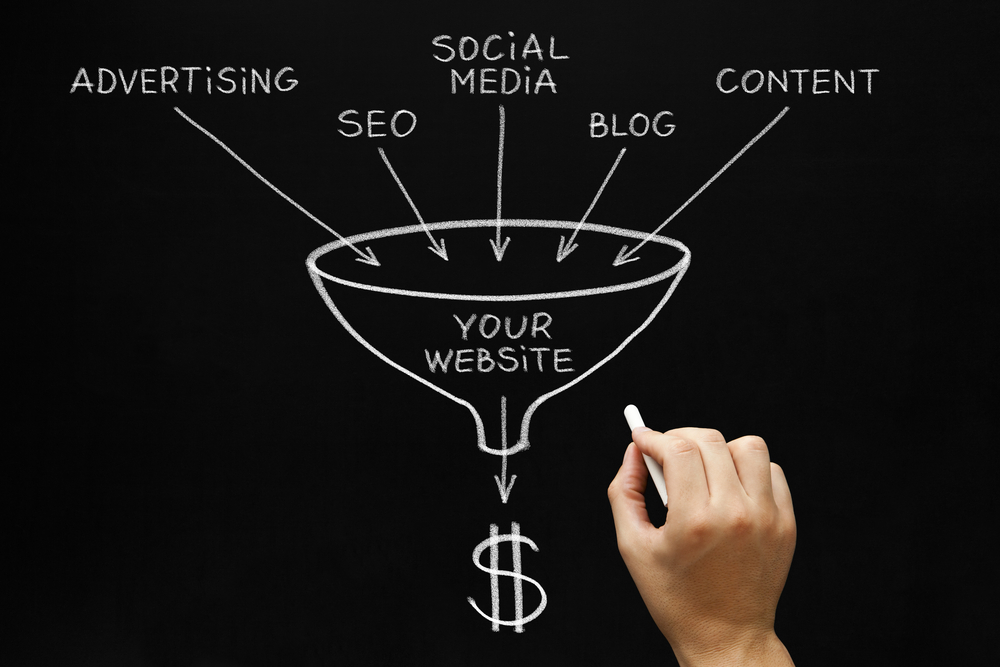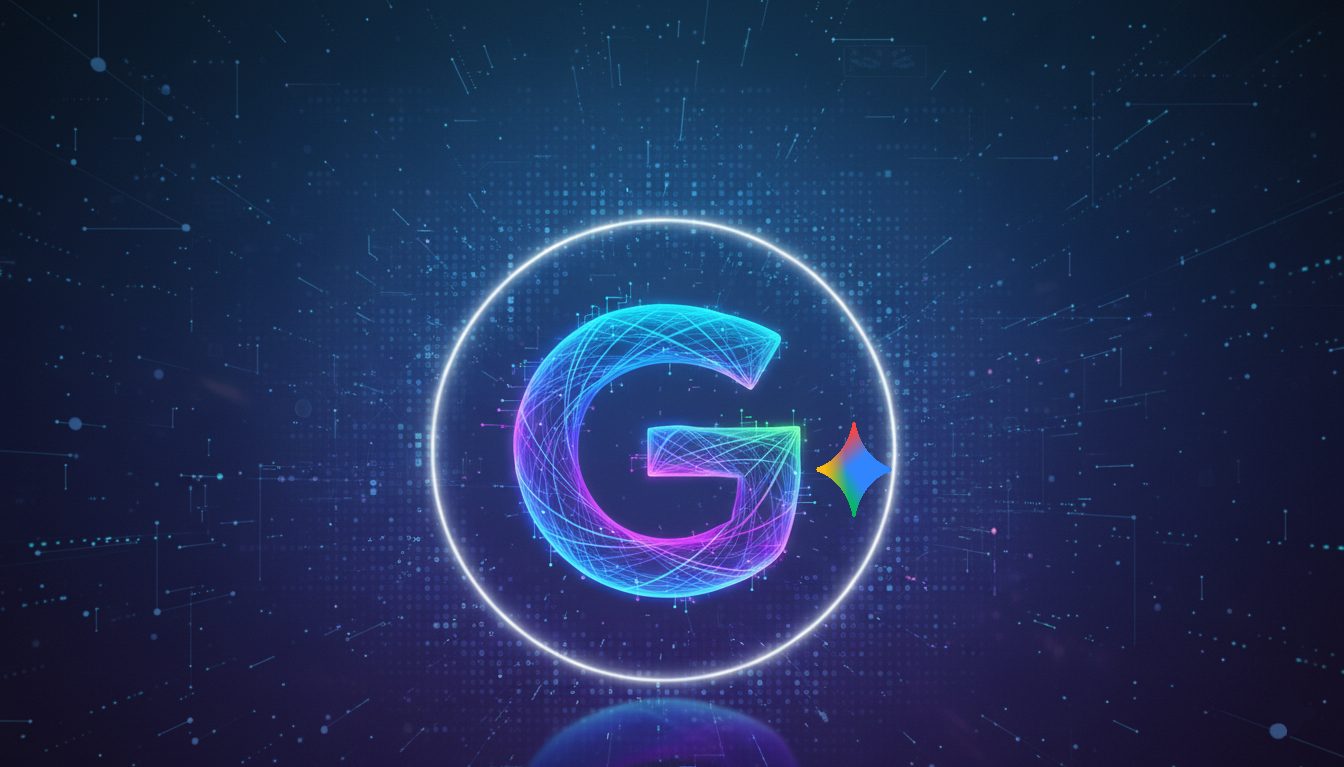In the old days, traditional marketing approaches allowed businesses to control the buying process by providing all the information that purchasers needed about their products and services. Today, that power has shifted to the buyer as the early stages of the buying cycle have moved entirely online. Potential customers are actively researching ways to solve their problems and what products and services can help them with their needs. This puts the power in the hands of the buyer because now they are unleashed into a world of information; one that includes your competitors and their products and services. With little control over the customer acquisition process, companies are left almost at the mercy of the potential customer. This is where inbound marketing comes in.
Inbound marketing is a prevalent marketing approach for the digital age that’s largely based on the concept of the marketing funnel. It refers to strategies through which businesses target their ideal customers. These customers would typically have shown some interest in the company’s products or services. They would do this in the form of:
- Visiting the company’s website
- Following the business on social media
- Searching for similar products or services
Inbound marketing strategies are designed to take these ideal prospects through the marketing funnel with the aim of turning them into customers at the bottom of the funnel. Inbound marketing helps you to guide your target audience through the buying process.
The marketing funnel imitates the classic funnel and explains the process your customers pass through when they come to know about your brand. Depending on how you nurture your visitors, they move from the top of the marketing funnel to the middle of the funnel and then to the bottom of the funnel. This represents the process they take from lead to prospect to customer. Inbound marketing is the new marketing approach through which you identify your customers’ problems, clarify how your products or services can solve their problems, and engage with your prospects to build interest in your offers and eventually turn them into customers.
A solid funnel strategy can help your business make more sales in a world where marketing is technology-driven, but that’s not really a new approach. While inbound marketing is a great strategy every business should have in its arsenal, and a marketing funnel is the most concrete plan they can follow, it’s almost common knowledge by now. To make sure your company stands out, the ace up your sleeve should be SEO.
Why is inbound marketing important?
Inbound marketing provides brands with an avenue to appear authentic in today’s marketing landscape. Since potential customers are doing their research and gathering information about a business before patronizing it, disruptive marketing is largely unwelcome today. Inbound marketing enables brands to influence the information-gathering process of potential customers so that their products and services stand out and are properly positioned as the ideal solution to the prospect’s problems.
Through inbound marketing, businesses are able to connect with prospects and engage them with relevant content that helps them make a decision. Inbound marketing empowers you as a business to determine how prospects view your brand and influence whether they choose your products and services. Businesses without a solid inbound marketing strategy leave all the decision-making to the prospect who could end up bouncing back to a competitor who has a better inbound marketing strategy in place. Since customers have become their own salespersons, inbound marketing enables you to provide as much information about your offerings as possible and to show how your products and services meet customer needs. A well-implemented inbound marketing strategy can help convert prospects into leads.
What is an inbound marketing funnel?
An inbound marketing funnel is a graphic illustration of the buyer’s journey. It is also called the “inbound marketing sales funnel” and illustrates how your buyers move from being visitors to customers. The inbound marketing funnel is a representation of how and where leads are in their journey to purchasing from you and choosing your business over the competition. Typically, the top of the funnel is wider because you have a large pool of prospects who are potentially interested in your offerings. However, this pool decreases in size as your prospects move down the funnel because not everyone who gets to know about your business will buy from you. In the end, you should have a clear representation on how you’re turning leads into customers.

How do you create an inbound funnel?
Even though your potential customers are going on this journey on their own, you can create a strategy that lets you have some control over the process. Inbound marketing allows you to tailor your marketing to the behavior of your ideal customers. They get to know your brand, as well as similar brands, and determine which one to purchase from. By creating an inbound marketing strategy, you determine exactly what information they find about your brand, which allows you to explain how you are better than your competitors and why potential clients should follow your lead.
To create an inbound funnel, you need to understand how the funnel works, who your target customers are and how best to engage them. You can start creating your inbound funnel by developing buyer personas: these are specific descriptions of your ideal buyer, who and what they are, how they look, and what their interests are. Why do your ideal customers need your product? What problem are they trying to solve? These are all questions that go into creating buyer personas for your business. Customers who fit these buyer personas are your target audience.
Your ideal buyers need a way to find you. So the next step would be creating a landing page that captivates them. This will require you to spend some time developing a well-designed and functioning website to guarantee your success. Social media also plays a role in finding your ideal customers. These customers then become traffic that you generate into your funnel. You can do this by providing your ideal customer with a valuable piece of content and collecting their email address in return. At this stage, your prospects are at the wider part of your sales funnel which is the top of the funnel.
You will then need to create a strategy that takes customers to the next stage of your funnel, such as an email drip campaign. Your aim is to get them to the bottom of your funnel where they are likely to make a purchase.
We encourage you to create your own personal inbound marketing funnel strategy, but we understand not everyone has the time to do it. Having professionals do it for you will yield better results and is a hassle-free option. From putting your website together, creating an effective landing page, driving traffic into your funnel, and nurturing your prospects through the rest of the buyer’s journey, our professionals at Nomadic Advertising will provide you with the best results.
ToFu, MoFu, BoFu: meaning and strategies
Now that you have a general idea of what a marketing funnel strategy looks like and what it can do for your business, let’s delve a little deeper and analyze what each strategy requires from you and exactly what we recommend you include in each one. The three main stages of the funnel are popularly known as ToFy, MoFy, and BoFu.
- ToFu is short for the top of the funnel and it refers to the widest part of your inbound marketing funnel
- MoFu means the middle of the funnel
- And, you guessed right, BoFu means the bottom of the funnel
These are the different stages of the inbound marketing funnel and where your potential customers are on the buyer’s journey.
ToFu: Topp-funnel marketing
At the top of the funnel, potential customers are trying to get all the information they can about how to solve their problem or pain point. This is the awareness stage where they get to know about your business. Usually, they begin their journey with a search. If they end in your funnel, then that search landed them on your website or social media platform.

Top-funnel visitors are very broad and account for 85% of your website visitors. Your role at this stage of the customer journey is to help these prospects find all the information they need. You can do this by providing educational and helpful content that allows them to explore possible solutions to their problems. You can introduce your products while you are at it and position yourself as a helpful resource. Conversions are usually low at the top of the funnel as your prospects are still learning everything they can about how to solve their problems or meet their needs.
MOFU: Mid-funnel marketing
At the middle of the funnel, the visitor is already clear about the solutions they need. As a result of all the information you provided them with, they are starting to see your brand as a possible option for their needs. The visitors at this stage of the funnel are qualified leads as many of your ToFu visitors will fall out of the funnel naturally, thereby providing you with a much smaller audience. These prospects typically want to learn more about your products and services in order to determine whether it is the right fit for them. Your role here is to provide more information and clarity around why your product or service is the best option for their needs.
MoFu visitors use long-tail keywords in their searches to narrow down their options. You should find out what these keywords are and include them in your content. MoFu visitors also tend to research specific brands and specific products. To put yours in the best light, you would have to secure a healthy pool of backlinks to your site and get mentioned on authority websites and listicles. MoFu visitors are fond of comparing brand options with words like ‘best’ or ‘versus.’ Thus, it’s important that you appear on third-party sites and in third-party content that are providing them with this information.

Example: Listicle about legal blogs. (Image source)
BoFu: Bottom-funnel marketing
This is the last funnel stage. BoFu visitors are your highly qualified leads. These prospects are at the tip of their buying journey and on their way to making a purchase. They have their credit card in hand and just need a little extra push to purchase from you. These prospects are searching for reviews about products they are interested in and typically want to know more about the brands on their list. They need proof that they would get the results they want from the product they eventually choose.
You should help them make your brand stand out. Reassure them that what you offer is the perfect solution to their problem and try to make them see the purchase as being worth the risk. To do this, you need to provide strong warranties and top-notch customer support. You should be easy to contact and available to guide BoFu prospects through the purchase.

Example: Review for hairstyling services. (Image source)
ToFu, MoFu, BoFu examples
All stages of the inbound marketing funnel are heavily reliant on high-quality content. You have to make information easily accessible and communicate with your prospects through the appropriate content. The kind of content you need to create at each stage of the funnel is different. You also need to invest in keyword research tailored for each stage of the funnel. Similarly, your website architecture should be designed to support an inbound marketing strategy.
- Examples of ToFu content include blog posts, ebooks, guides, podcasts, webinars, infographics, checklists, and so on. You could provide easy access to these on your website menu through a resources tab.
- Examples of MoFu content include case studies, white papers, events, reports, product tutorials, ebooks, blog posts, and so on.
- Examples of BoFu content include product demos, customer features, tools, comparison charts, product webinars, video product walk-throughs, detailed case studies, and so on.
Inbound marketing and SEO

Inbound marketing and SEO are interconnected. The two serve the same purpose which is to engage your prospects and provide them with the information they need to decide on making a purchase from your brand.
- While inbound marketing pulls your prospects through the marketing funnel, SEO works to make sure the content in your inbound strategy is engaging.
- SEO also helps your content to rank on search engines so that it drives traffic to your inbound marketing funnel.
- SEO helps with making your content relevant and engaging.
Optimized and valuable content that fits this description is really what will make your prospects move down the funnel.
Why is SEO important in inbound marketing?
The most important feature of SEO (or search engine optimization) is that it ensures that your business reaches the target audience. When your ideal customers input the right keywords as search queries, search engines will suggest your content to them. Implementing SEO within your inbound marketing strategy simply involves utilizing the right keywords in the content you’ve prepared for your funnel. It also involves optimizing your landing page and other pages of your website with these keywords and building a backlink profile that stands out for potential buyers. An inbound marketing strategy that does not include SEO is bound to fail because the content you include in your funnel will not be properly optimized for your ideal buyers, which means it’ll have a harder time reaching them.
Creating an inbound marketing SEO strategy
Some common SEO inbound marketing strategies include social media, content marketing, and user guides. These strategies help with building a healthy backlink profile and interacting or engaging with prospects. Businesses that have a social media presence and provide great content on their pages tend to get shares, which leads to valuable backlinks and more website visitors. Backlinks are important to search engines’ algorithmic system and so are keywords.
To implement an inbound marketing SEO strategy, you should do keyword research for each stage of the funnel and add the relevant keywords to your content. Another thing you should prioritize is your meta titles and metadata. Optimizing all aspects of your content and your website at every stage of your marketing funnel will be a game changer for your business.
Every business thrives on the right form of digital marketing. Curating an optimized marketing funnel and creating a matching SEO strategy can increase conversions for your company if properly implemented. Merging these forms of marketing can enable you to reach your ideal customers, engage and convert them. But it all starts with getting your strategy right. You need professional support along the way to create inbound marketing that revolutionizes your business. We can help you create a strategy that does precisely that. We will work with you to implement an inbound marketing SEO strategy that will increase your bottom line. Reach out to us to discuss your needs. You can start today by booking a FREE 30-minute consultation with us. The more prospects make it to the bottom of your funnel, the more sales you’ll typically make. Allow us to help you increase the numbers!
FAQ
What is an example of inbound marketing?
An example of inbound marketing is creating content that is valuable for a company’s target audience, such as blog posts. When blog posts are optimized with SEO before they are implemented in the inbound funnel, they work harder at engaging and converting prospects.
What is marketing funnel vs. brand funnel?
While the marketing funnel focuses on purchase as the goal for the bottom of the funnel, the brand funnel focuses on brand loyalty. As such, marketing funnels are designed with each new visitor seen as a potential customer but brand funnels are designed with each new user seen as a potential advocate. Everyone in a brand funnel could potentially spread the message of the company. In the marketing funnel, they could end up purchasing the company’s product or service.
What is the difference between an inbound and outbound marketing funnel?
An inbound marketing funnel involves creating content that pulls prospects toward a company’s offerings. An outbound marketing funnel, on the other hand, involves the company reaching out to potential customers with the aim of making them interested in its offerings. Outbound marketing can include sending proposals to potential customers or advertising on social media.





